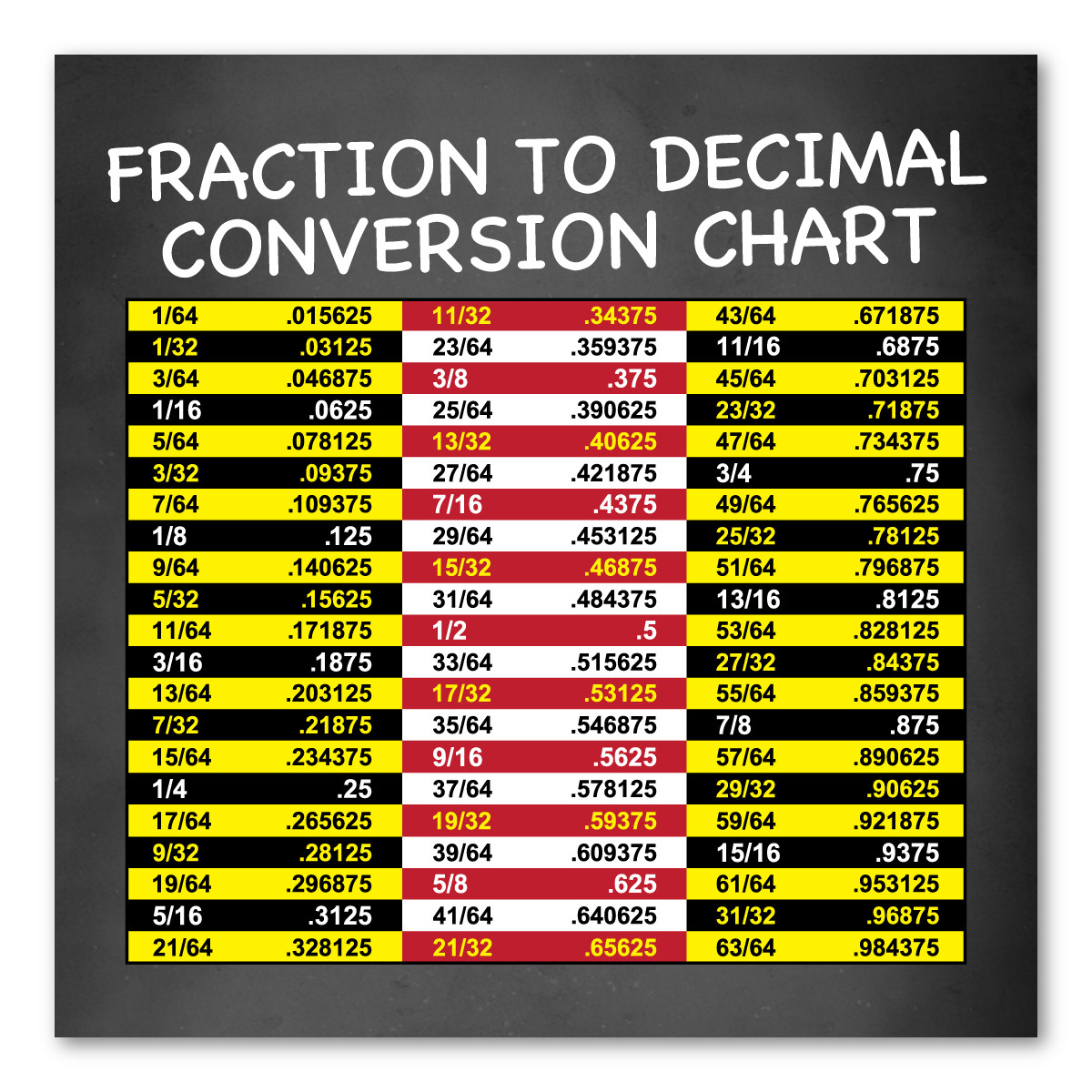

1/4 = 0.25 is a terminating decimal since it has a finite number of decimal digits.To see what the difference is, let’s take a look at a few examples of decimal representations of rational numbers:
#Decimal to fraction converter chart how to
You have provided the following decimal \(D = \displaystyle 0.8\), and the objective is to convert it to a fraction.What are Terminating and Repeating Decimals?īefore we get into the details of how to actually convert terminating and repeating decimals into opens in a new windowfractions, we’d better make sure we understand what it means for a rational number to be a “terminating” or “repeating” decimal in the first place. Notice that converting a fraction to a decimal can lead to a finite decimal number, or potentiallyįor example, the fraction \(\displaystyle \frac\), which concludes the calculation. Simply the common algorithm of division Arithmetics. Maybe you want to convert a fraction to a decimal, which is Naturally, you may be facing the reverse situation.

Represent the same information in a more convenient way for a given context.įor example, using a percent to fraction calculator does a similar job as this decimal to fraction calculator, with the difference that you will need to And often times, they are just different formats to Naturally, as you probably realize now, fractions, decimals and percentages are tightly related. Using the conversion formula, you are assured that you can convert ANY number, but you actually need to work on the calculation.Ĭalculators about fractions and percentages.The problem with the chart is that the precise decimal or fraction you are looking for is not there.Using a chart is direct: You just look at the chart and get the decimal - fraction conversion immediately.There are classic charts that provide you a clear snapshot of the equivalence of the most commonly used fractions and their decimal conversions.Īdvantages and disadvantages of using a chart versus the formula for decimals to fraction Step 3: The formula for expressing the given number to a fraction isĪnd possibly, you may want to reduce the fraction on the right to its lowest expression. Step 2: From the previous step, you have the power of 10 you used to "eliminate" the decimals, say that number is \(10^k\), and say that N is the Would say, so there are no decimals in the number. You multiply D by a power of 10, so that there are no more digits to the right of the ".", or as some

Step 1: Let D a number with decimal digits. The number after "eliminating" the decimals is N = 234 and the power of 10 used is \(10^2 = 100\). Once you do that, you take note of the power of 10 you used to achieve that, because then you will use that to convert the given number to a decimal.įor example, if you had the number 2.34, you need to multiply by 100 to "eliminate" the decimals, so you get \(2.34 \cdot 100 = 234\). The strategy is simple: we need to try to "eliminate" the decimals (the digits on the right of the ".") by multiplying the number by a power of 10. How do you convert a decimal to a fraction? Digits that have only a "0" on the left of the "." are usually written like. In simple words, decimals are numbers as you know them, this, you have a sequence of digits (numbers between 0 and 9), followed possibly by tenth parts, representedĮxample of digit: For example, 45.34556 and 0.5678 are digits. What is a decimal? A decimal refers to a way of expressing numbers using the number of ten as its base, as well as powers of ten and tenth parts. About this Decimal to Fraction Calculator


 0 kommentar(er)
0 kommentar(er)
